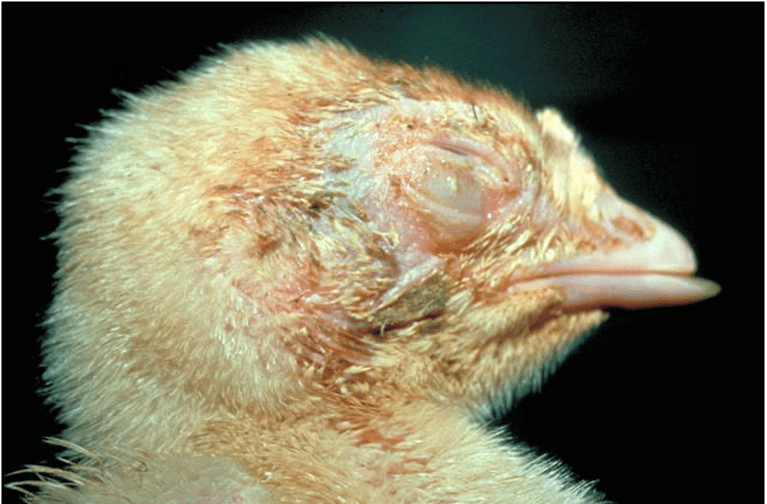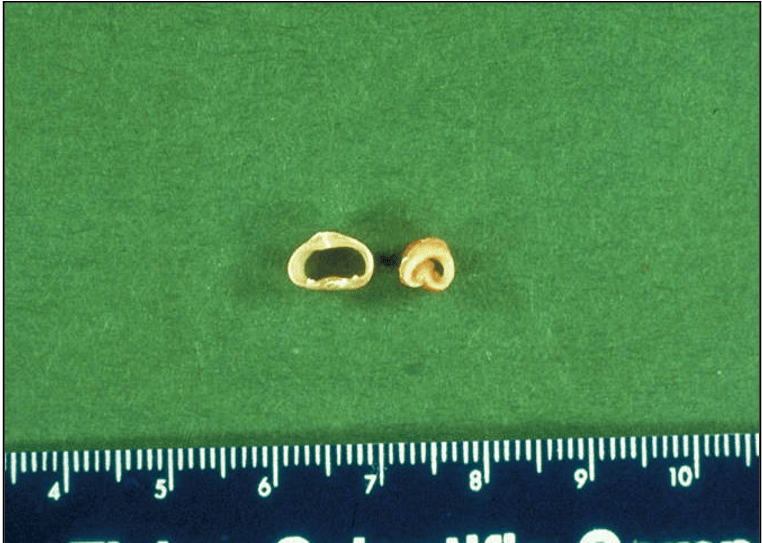Bordetellosis (Turkey Coryza) in Turkeys
By Martin Ficken, DVM, PhD
Bordetellosis is a highly contagious upper respiratory tract disease of poultry caused by Bordetella avium, a gram-negative motile aerobic rod-shaped bacterium. B. avium is primarily a disease of turkeys, although the organism has been shown to infect chickens and other avian species. Initially, it causes a clear nasal exudate and foamy exudate in the medial canthus of the eyes (Figure 1). Sneezing is common as well as open mouth breathing. The disease may progress to the point where the head and wings are covered with a brown thick exudate (Figure 2). Tracheas of birds often become filled with mucoid exudate and the trachea may soften and collapse (Figure 3). Morbidity often approaches 100% in a flock, but mortality depends on other complicating factors such as the presence of other disease agents and adverse environmental conditions (temperature, air quality, etc.). B. avium adheres and colonizes the cilia of the epithelial cells of the upper respiratory tract making it difficult for the bird to mount an effective immune response to rid the bird of the infection.
Differential diagnoses for an acute upper respiratory infection of turkeys includes turkey rhinotracheitis virus, endemic Newcastle disease virus, low pathogenic avian influenza virus, and mycoplasmosis. Often these other pathogens accompany B. avium, exacerbating the clinical disease.
Because B. avium colonizes the cilia, antibiotic treatment is very difficult and not practical. Treatment is often directed at secondary or concurrent bacterial pathogens such as Escherichia coli.
To learn more about TVMDL’s poultry test offerings, visit tvmdl.tamu.edu or call one of the agency’s four laboratories.
Reference
Jackwood MW and Saif YM. Bordetellosis (Turkey Coryza) in Diseases of Poultry, 13th edition, Wiley-Blackwell, ed. Swayne, DE et al. pp. 834-858, 2013.

Figure 1 – Early symptoms of bordetellosis, open-mouth breathing, nasal exudate, and foamy exudate at the medial canthus of the eye. Courtesy of Dr. H. John Barnes, College of Veterinary Medicine, North Carolina State University.

